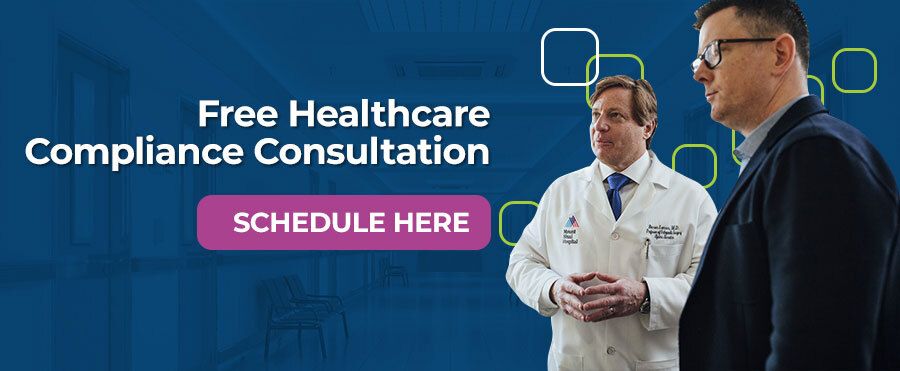Why OIG Exclusion List Screening is No Longer Just a Should Do It's a Must Do!
In the healthcare industry, providers, professionals, and organizations are allowed some flexibility, some standards may be required while others may be addressable. Not long ago, there was not a specific statute or regulation that required your practice to check the U.S. Department of Health and Human Services (HHS) Office of the Inspector General's (OIGs) List of Excluded Individuals and Entities (LEIE). There were a lot of questions such as:
- Who should be checked against the LEIE?
- How often should exclusion list screening be performed?
- Are there potential penalties for not checking the OIG exclusion list?
Exclusion List 101 - an overview
The OIG's LEIE Database (Exclusion List) is where individuals and entities currently excluded from participation in Medicare, Medicaid, and all other Federal health care programs, can be found. According to the OIG, exclusions are imposed for a number of reasons:
- Mandatory exclusions - conviction of Medicare or Medicaid fraud; patient abuse or neglect; felony convictions for other healthcare-related fraud, theft, or other financial misconduct; and felony convictions relating to unlawful manufacture, distribution, prescription, or dispensing of controlled substances; among others.
- Permissive exclusions - OIG has discretion to exclude individuals and entities on a number of grounds: misdemeanor convictions related to health care fraud; misdemeanor convictions relating to the unlawful manufacture, distribution, prescription, or dispensing of controlled substances; submission of false or fraudulent claims to a Federal health care program; among others.
The exclusion list is updated on a monthly basis, and if an individual or entity has been reinstated, they are removed from the list. Further, the OIG is authorized to impose exclusions under the authority of sections1128 and 1156 of the Social Security Act.
The LEIE can be accessed in a couple of ways:
- First, the OIG provides an Online Searchable Database where you can enter the name of an individual or entity and determine whether they are currently excluded. If there is a match, the database allows for verification with other identifiers including an individual's Social Security Number (SSN), Employer Identification Numbers (EIN), Date of Birth (DOB), and others.
- Second, the OIG provides a Downloadable Database where you can download the entire LEIE. The Downloadable Database does not include SSN's or EINs; therefore, if you choose to verify an individual using these identifiers is must be accomplished using the Online Searchable Database.
Both the Online Searchable Database and the Downloadable Database are updated on a monthly basis. Additionally, these lists are being heavily enforced by a task force that is responsible for checking for excluded individuals (more on this later).
Who Should be checked against the LEIE?
Previously we mentioned that your organization is responsible for not employing or contracting with excluded individuals or entities, whether in a physician practice, a clinic or in any capacity or setting in which Federal healthcare programs may reimburse for the items or services furnished by those employees or contractors. The same holds true still. If you participate in Medicare, Medicaid or any other Federal health care programs all employees/vendors/subcontractors are required to be checked against the exclusion list.
How often should exclusion list screening be performed?
You should be checking all employees, vendors, and subcontractors against the exclusion list prior to hiring or contracting and then recheck monthly thereafter. In aSpecial Advisory Bulletin on the Effect of Exclusion from Participation in Federal Health Care Programs Issued May 8, 2013, the following emphasizes how often exclusion list screening should be performed:
To avoid potential CMP liability, providers should check the LEIE prior to employing or contracting with persons and periodically check the LEIE to determine the exclusion status of current employees and contractors.
Inspector General Daniel Levinson of the HHS has emphasized the need for monthly checks. He has stated that it is his recommendation to search the OIG exclusion list monthly because therecords are updated monthly. And CMS and plan sponsors required healthcare organizations to attest that exclusion list screenings are happening prior to hiring or contracting and monthly thereafter.
Are there potential penalties for not checking the OIG exclusion list?
It's not a question of if, but when: if you employ or contract with excluded individuals or entities you will be subject to fines and penalties. Remember the task force responsible for checking excluded individuals mentioned above? The OIG has increased focus on checking for excluded individuals, and make no mistake if the task force finds that you have employed or contracted with excluded individuals or entities, you could face fines and penalties (42 CFR 1001.1901).
According to the OIG, an excluded person violates the exclusion if the person furnishes to Federal health care program beneficiaries' items or services for which Federal health care program payment is sought. In other words, an excluded person who submits a payment to a Federal health care program, or causes such a claim to be submitted, may be subject to a civil monetary penalty (CMP) of $10,000 for each claimed item or service furnished during the period that the person was excluded. In addition, you may be subject to an assessment of up to three times the amount claimed for each item or service, and denial of reinstatement by OIG to Federal health care programs because of an exclusion violation (section 1128A(a)(1)(D) of the Act).
Examples of recent enforcement
In 2018 there were numerous actions by the OIG. Below are just two examples of severalenforcement actions that occurred in 2018:
On August 8, 2018, CHJ Diagnostic, Inc., an independent diagnostic testing facility in Orange, California, and Andranik Tovmasyan, its owner (collectively, "CHJ"), agreed to be excluded for a period of five years under 42 U.S.C. 1320a-7(b)(7). OIG's investigation revealed that CHJ submitted claims for nerve conduction studies that are considered screening exams and not covered by Medicare. OIG's Office of Audit Services and Office of Counsel to the Inspector General, represented by Senior Counsels Geoffrey Hymans and Kenneth Kraft, collaborated to achieve this resolution.
William H. Newman, M.D., and Allergy & Asthma Specialists of Northern Vermont, P.C. (collectively, "Dr. Newman"), entered into a $61,142.96 settlement agreement with OIG. The settlement agreement resolves allegations that Dr. Newman employed an individual who was excluded from participating in any Federal health care program. OIG's investigation revealed that the excluded individual, a registered nurse, provided items or services to Dr. Newman's patients that were billed to Federal health care programs. OIG's Office of Audit Services, Office of Investigations and Office of Counsel to the Inspector General, represented by Senior Counsel John O'Brien, collaborated to achieve this settlement.
How we can help you with the exclusion list process?
Even though there isn't a specific statute or regulation, the LEIE is public knowledge. And CMS, OIG, and sponsors are now requiring the exclusion list screening to be performed. Therefore, taking the stance of "I didn't know I should be" or "we only screen our providers" will not prevent fines or penalties. If you are a healthcare organization participates in Medicare, Medicaid or any other Federal Healthcare program, you must be checking the OIG Exclusion List.
Depending on the size of your organization, checking the OIG Exclusion List for all employees, vendors, and subcontractors could be an arduous process. Because we recognize the burden of checking the online database can be a challenging and potentially costly process for your organization, we offer an affordable monthly exclusion list service. Our OIG Exclusion List service is a tool that ensures your organization is screening all employees, vendors, and subcontractors against the DHHS OIG List of Excluded Individuals and Entities (LEIE) prior to hiring or contracting and monthly thereafter.
The best practice for finding exclusions is to search the System for Award Management (SAM) in addition to the OIG Exclusion List in order to get a complete picture and search all available federal datasets of excluded, sanctioned and debarred persons or companies. Our screening service tools ensure your organization is screening all employees, vendors, and subcontractors against the HHS OIG List of Excluded Individuals and Entities (LEIE) and System for Award Management (SAM), prior to hiring or contracting, and monthly screenings thereafter. We offer these services for clients to help them stay compliant with all plan sponsor requirements.
Have additional questions about screening requirements or our services to help? Please contact us by email: support@hcp.md or by phone: 855-427-0427.


